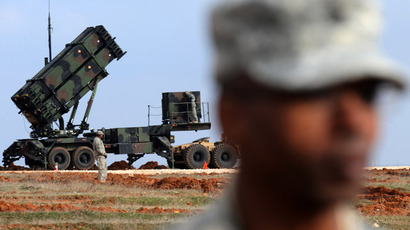Lavrov: No need for European missile defense shield if Iran deal a success
Russian Foreign Minister Sergey Lavrov says the US will no longer have a reason to build the long-touted missile defense shield in Europe, if Iran fulfills its obligations in the recently-signed nuclear program deal.
“If the Iran deal is put into practice, the stated reason for the construction of the defense shield will no longer apply,” Lavrov told journalists in Rome.
NATO is currently rolling out its new Europe-wide missile defense
shield, which will include two interceptor bases close to the
Russian border in Romania and Poland, with the first of the first
ground missiles becoming operational in 2015. The bases will be
able to shoot down short and medium-range ballistic missiles.
Russia has long protested at the placement of such bases on its
borders, but during both, the Bush era and Obama’s terms,
Washington has insisted that the bases are primarily directed
against a potential threat from Iran, and are too close to Russia
to stop any of its nuclear warheads.
On Sunday, Iran agreed to curtail its nuclear program in exchange
for a loosening of substantial EU and US sanctions that have
crippled its economy.
The initial term of the deal is six months, though both sides
hope this will lead to a permanent rapprochement after a
stand-off that lasted a decade, during which the West accused
Iran of attempting to acquire a nuclear weapon, while Iran denied
this, insisting that it was entitled to enrich uranium.
US Secretary of State John Kerry, while visiting Europe earlier
this month, said that the deployment of the missile shield was
not likely to be contingent on improving relations with Iran.
“Nothing has changed at this point and I don't foresee it
changing,” he said.
NATO has also confirmed that it regards the missile defense to be
a deterrent against any threats to Europe, not just one coming
from one country.
The current European Phased Adaptive Approach (EPAA) missile defense system was adopted by the White House in 2009. It generally uses more established technologies than President George W. Bush’s expensive and ambitious system that first aroused Russia’s ire over five years ago. The most ambitious phase of the program, initially scheduled to begin next decade, was also canceled earlier this year.
Nonetheless, negotiations about Moscow’s potential involvement in the defense shield have broken down over a lack of trust, and the recent groundbreaking ceremony at NATO’s base in Romania was swiftly followed by an unannounced test of Russia’s newest ballistic missiles as well as international patrols by its strategic bombers.
Lavrov recently called missile defense a “burning issue”
in Moscow-Washington relations, and said that Russia will soften
its stance on the Eastern European bases only if NATO provides
written assurances that they will never be used to shoot down
Russian missiles, a request it has repeatedly rejected.














